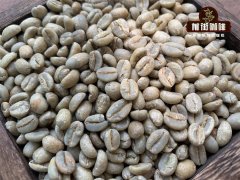Summary of coffee bean grade classification in various countries formulation and grade classification of coffee producing countries
In the Qianjie coffee factory, each batch of new beans received, there will be information about these beans, coffee producing country, altitude, manor, treatment, and the grading of coffee to be mentioned today, such as Kenya PB, Yega G1, so what does these grading letters mean? in fact, coffee grading standards vary from country to country and from region to region.
Coffee beans can be graded according to their quality, that is, grade formulation or grade classification, but the grading methods and benchmarks can vary according to different producing countries or regions, importers and exporters, and so on. the grade of coffee beans is generally divided according to the size of beans called sieve numbers.
Kilimanjaro (KILIMANJARO)
According to the size and weight of coffee beans
It is divided into nine grades: AA, A, B, AF, C, TT, F, PB and E.
(AF refers to coffee beans with lighter weight within An and A)
(TT refers to the lighter coffee beans selected from B)
(F refers to lighter coffee beans in AF and TT)
(PB refers to bean-shaped berry coffee beans)
(e refers to elephant beans)

Kenya (KENYA)
According to the size, weight and shape of coffee beans
Divided into PB, AA, AB, C, E, TT, T in turn
(PB refers to bean-shaped berry coffee beans)
(TT refers to lighter coffee beans selected from all grades, including bean-like crumbs.)
(t refers to the smallest coffee beans, damaged coffee beans, immature coffee beans)
Mocha Haller (MOCHA HARRAH)
There are eight grades according to the number of defective beans.
Respectively, G1 is the highest grade.
The output standard is more than G5 with the number of defective beans of 460.100.
Mocha Sidamo (MOCHA SIDAMO)
There are eight grades according to the number of defective beans.
Respectively, G1 is the highest grade.
The output standard is more than G5 with the number of defective beans of 460.100.
Mocha Matari (MOCHA MATTARI)
There is no formal rating standard.

Blue Mountain (BLUE MOUNTAIN)
According to the size of coffee beans and the number of defective beans from high to low
It is divided into four grades: blue Mountain No.1, No.2, No.3 and mixed beans.
Puerto Rico, PUERTO RICO
There is no formal rating standard.
Cuba (CUBA)
CM (Crystal Mountain) is the highest grade coffee produced in Cuba.
According to the size of coffee beans and the number of defective beans
It is divided into three grades: ETL (Super), TL (Intermediate) and AL (ordinary).
Mexico (MEXICO)
From high to low according to the altitude of the producing area
Divided into SHG, HG, PW and GW in turn

Guatemala (GUATEMALA)
From high to low according to the altitude of the coffee producing area
It is divided into SHB (extremely hard beans), HB (hard beans), SH (slightly hard beans),
EPW (extra high quality water washed beans), PW (high quality water washed beans), EGW (extra high quality water washed beans)
Seven grades of GW (good quality washed beans)
El Salvador (EL SALVADOR)
From high to low according to the altitude of the coffee producing area
It is divided into three grades: SHG, HG and CS.
Honduras (HONDURAS)
From high to low according to the altitude of the coffee producing area
It is divided into three grades: SHG, HG and S
Costa Rica (COSTA RICA)
According to the origin and the altitude of the origin
It is divided into SHB, GHB (high quality hard bean), HB, MHB,
HGA (Atlantic high altitude growing coffee beans),
MGA (coffee beans grown at mid-Atlantic altitude),
LGA (Atlantic low altitude growing coffee beans)
Brazil (BRAZIL)
According to the number of defective beans, from high to low
Divided into No.2~8 in turn
It is divided into 10 stages according to the size of coffee beans.
According to the cup test, it is divided into Strictly Soft, Soft, Softish, Hard (difficult),
Rioy (light iodine odor), Rio (iodine odor), Rio Zone (strong iodine odor)
On the basis of a more detailed classification of taste grades
Colombia (COLOMBIA)\
According to the size of coffee beans and the number of defective beans from high to low
It is divided into two levels: Supamo and Celso.
"Emerald Mountain" is the best 1% of all coffee beans by the Colombian production Federation.
The title given.
Peru (PERU)
According to the sorting method of defective beans, from high to low
It is divided into ESHP (Eectronic Sorted & Hand Pick),
ES (Eectronic Sorted),
MCM (Machine Cleaned Mejorad),
Four levels of MC (Machine Cleaned)
Mantenin (MANDHELING)
According to the number of defective beans, from high to low
It is divided into six grades: G1, G2, G3, G4, G5 and G6.
The origin names of coffee such as Toba and Medan are usually attached.
Java Robusta (JAVA ROBUSTA)
Washed coffee beans are marked with WIB
From high to low according to the mixing of impurities
It is divided into three levels: 1, 2 and 3 in turn.
Non-washed coffee beans are expressed as OBI
Vietnam Robusta (VIETNAM ROBUSTA)
According to the number of defective beans, from high to low
It is divided into three grades: G1, G2 and G3 in turn.
India (INDIA)
From high to low according to the size of coffee beans
It is divided into A, B, C and PB grades in turn.
Kona, Hawaii (HAWAII KONA)
According to the number of defective beans, from high to low
It is divided into three grades: EXF (excellent), F (quality) No.1 and PB.
Important Notice :
前街咖啡 FrontStreet Coffee has moved to new addredd:
FrontStreet Coffee Address: 315,Donghua East Road,GuangZhou
Tel:020 38364473
- Prev

Is there a shelf life for raw coffee beans? How long is its shelf life?
The coffee culture is broad and profound, and the world of fine coffee is really too vast. With regard to boutique coffee, the flavor is obviously different in different months, soil and water, altitude, variety and treatment, and the influence of coffee manor on the flavor is also very important. So what are the other variables that affect the quality of coffee? we have heard of the freshness of coffee beans, usually roasted coffee.
- Next

What's the difference between boutique coffee and instant coffee? effects of boutique coffee and instant coffee on human body
We know that drinking coffee, as long as it is not excessive, is very good for people's health, but does it not mean that all coffee is good? The coffee that is beneficial to the human body mentioned in the front street refers to Italian coffee and now popular hand-brewed coffee. These coffee are not the instant coffee that is common in our daily life. Now all kinds of instant coffee in the market are greatly affected.
Related
- What brand of black coffee is the most authentic and delicious? what are the characteristics of the flavor of the authentic Rose Summer Black Coffee?
- Introduction to the principle and characteristics of the correct use of mocha pot A detailed course of mocha pot brewing coffee is described in five steps.
- Which is better, decaf or regular coffee? how is decaf made?
- How much is a bag of four cat coffee?
- How about four Cat Coffee or Nestle Coffee? why is it a cheap scam?
- Which is better, Yunnan four Cats Coffee or Nestle Coffee? How about cat coffee? is it a fake scam? why is it so cheap?
- How about Cat Coffee? what grade is a hoax? which instant coffee tastes better, four Cat Coffee, Nestle Coffee or G7 coffee?
- Process flow chart of coffee making-Starbucks coffee making process what coffee tastes good at Starbucks
- The top ten best coffee beans in the world Rose summer coffee or Tanzanian coffee tastes good
- Yunnan four cat coffee is good to drink?_four cat coffee is a big brand? four cat blue mountain coffee is fake?

